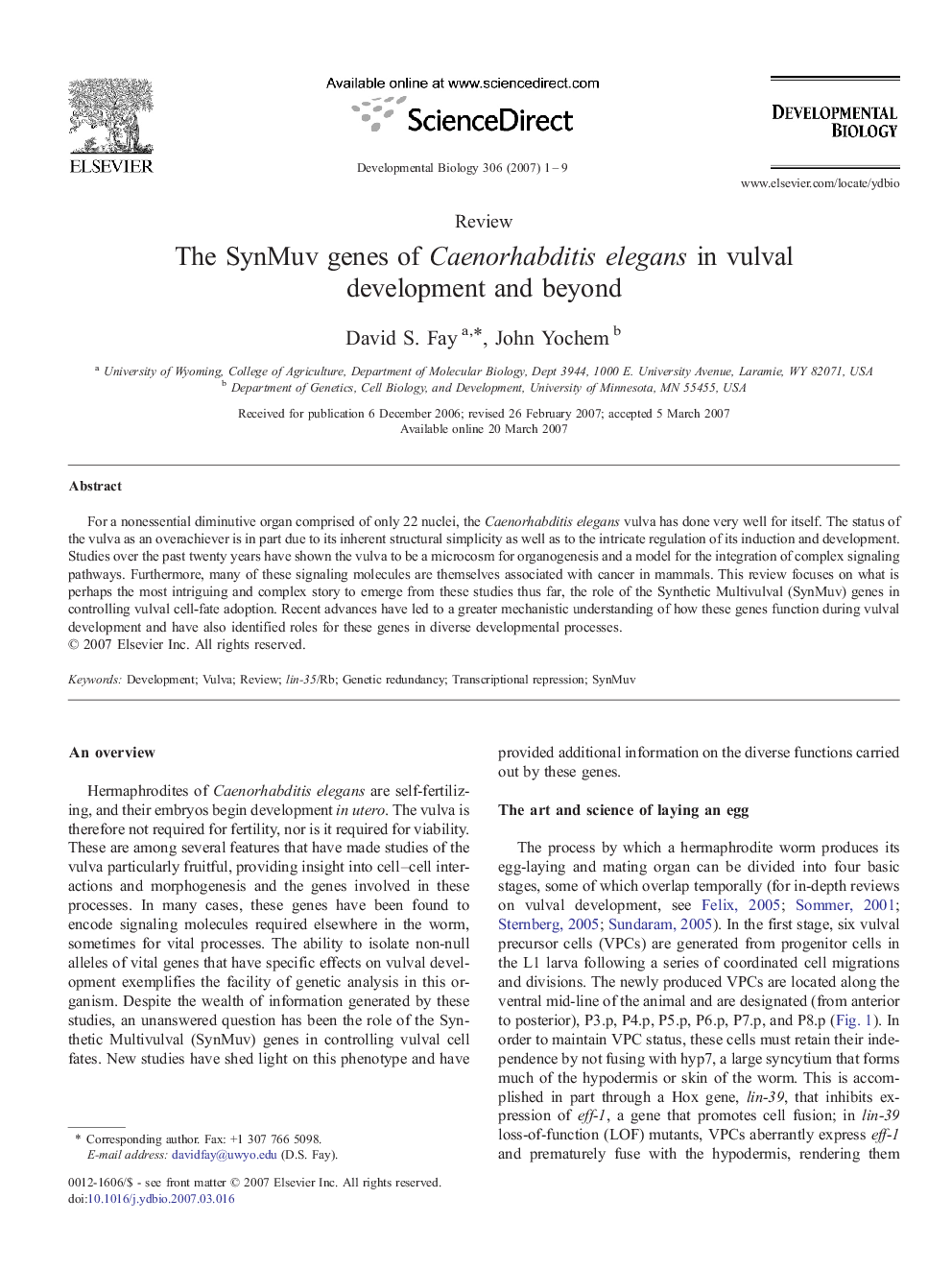| Article ID | Journal | Published Year | Pages | File Type |
|---|---|---|---|---|
| 2175099 | Developmental Biology | 2007 | 9 Pages |
For a nonessential diminutive organ comprised of only 22 nuclei, the Caenorhabditis elegans vulva has done very well for itself. The status of the vulva as an overachiever is in part due to its inherent structural simplicity as well as to the intricate regulation of its induction and development. Studies over the past twenty years have shown the vulva to be a microcosm for organogenesis and a model for the integration of complex signaling pathways. Furthermore, many of these signaling molecules are themselves associated with cancer in mammals. This review focuses on what is perhaps the most intriguing and complex story to emerge from these studies thus far, the role of the Synthetic Multivulval (SynMuv) genes in controlling vulval cell-fate adoption. Recent advances have led to a greater mechanistic understanding of how these genes function during vulval development and have also identified roles for these genes in diverse developmental processes.
